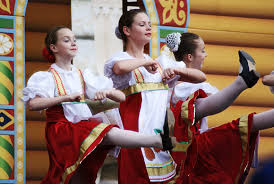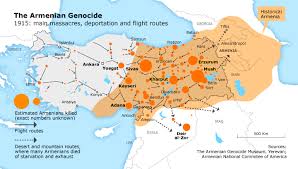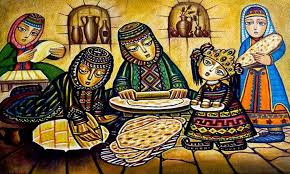Exploring Armenia’s Rich Cultural Heritage

The Rich Cultural Heritage of Armenia
Armenia, a country nestled in the Caucasus region, boasts a cultural heritage that is as diverse as it is ancient. From its traditional music and dance to its unique cuisine and craftsmanship, Armenia’s cultural tapestry is woven with threads of history, tradition, and resilience.
Music and Dance
Music and dance hold a special place in Armenian culture. The haunting melodies of the duduk, a traditional woodwind instrument, evoke emotions that resonate with the soul. Armenian folk dances, with their intricate footwork and vibrant costumes, tell stories of love, joy, and triumph.
Cuisine
Armenian cuisine is a reflection of the country’s rich agricultural heritage. Dishes like dolma (stuffed grape leaves), khorovats (barbecue), and lavash (flatbread) are not just meals but expressions of love and hospitality. Armenians take pride in their culinary traditions, passed down through generations.
Craftsmanship
The art of craftsmanship runs deep in Armenian culture. From intricate khachkars (stone crosses) to colourful ceramics and carpets, Armenian artisans showcase their skills through exquisite handiwork. Each piece tells a story of craftsmanship honed over centuries.
Language and Literature
The Armenian language is one of the oldest in the world, with a rich literary tradition to match. Works by renowned poets such as Hovhannes Shiraz and Paruyr Sevak capture the essence of Armenian identity and resilience. Literature has long been a source of pride for Armenians, preserving their stories for future generations.
In conclusion, Armenia’s cultural heritage is a treasure trove waiting to be explored. Its music, dance, cuisine, craftsmanship, language, and literature all contribute to a vibrant tapestry that reflects the soul of this ancient land.
Exploring Armenian Culture: Music, Dance, Cuisine, Craftsmanship, Literature, Language, Festivals, and Modernisation
- What traditional music instruments are popular in Armenian culture?
- How is dance used to express cultural themes in Armenia?
- What are some famous dishes in Armenian cuisine?
- How does Armenian craftsmanship reflect the country’s heritage?
- Who are some notable poets and writers in Armenian literature?
- What role does language play in preserving Armenian culture?
- Are there any traditional festivals or celebrations unique to Armenia?
- How has modernisation impacted traditional aspects of Armenian culture?
What traditional music instruments are popular in Armenian culture?
In Armenian culture, several traditional music instruments hold significant popularity and cultural importance. One of the most iconic instruments is the duduk, a hauntingly beautiful woodwind instrument known for its soul-stirring melodies. The duduk’s melancholic tones have the power to evoke deep emotions and are often featured in traditional Armenian music. Additionally, instruments like the zurna (a wind instrument), kamancha (a string instrument), and dhol (a drum) play vital roles in creating the rich tapestry of Armenian musical heritage. Each instrument contributes its unique sound to the vibrant mosaic of Armenian cultural expression, showcasing the depth and diversity of Armenia’s musical traditions.
How is dance used to express cultural themes in Armenia?
Dance in Armenia serves as a powerful medium for expressing cultural themes and narratives. Through intricate footwork, graceful movements, and vibrant costumes, Armenian dance embodies the essence of tradition, history, and identity. Each dance tells a story, whether it be a celebration of love and joy or a depiction of historical events and folklore. The choreography often reflects the rhythms of daily life, agricultural practices, or spiritual beliefs, offering a glimpse into the soul of Armenian culture. By preserving and showcasing traditional dances, Armenians not only honour their heritage but also convey their rich cultural legacy to audiences around the world.
What are some famous dishes in Armenian cuisine?
Armenian cuisine is renowned for its delectable dishes that showcase a blend of flavours and traditions. Some famous dishes in Armenian cuisine include dolma, which consists of grape leaves stuffed with a tantalising mixture of rice, minced meat, and herbs. Another popular dish is khorovats, a flavourful barbecue typically made with marinated meat skewered and grilled to perfection. Additionally, lavash, a thin and soft flatbread baked in a traditional clay oven, is a staple in Armenian meals. These dishes not only satisfy the taste buds but also offer a glimpse into the rich culinary heritage of Armenia.
How does Armenian craftsmanship reflect the country’s heritage?
Armenian craftsmanship serves as a poignant reflection of the country’s rich heritage, encapsulating centuries of tradition, artistry, and cultural identity. From intricately carved khachkars to vibrant ceramics and ornate carpets, each piece crafted by Armenian artisans tells a story deeply rooted in history and symbolism. The meticulous attention to detail and the use of traditional techniques passed down through generations not only showcase the skill and dedication of the craftsmen but also highlight Armenia’s resilience and creativity in preserving its cultural legacy. Through these masterpieces of craftsmanship, Armenia’s heritage is not just preserved but celebrated, offering a glimpse into the soul of a nation with a profound connection to its past.
Who are some notable poets and writers in Armenian literature?
Armenian literature boasts a rich tradition of notable poets and writers who have made significant contributions to the cultural landscape. Among them, Hovhannes Shiraz stands out for his poignant verses that capture the essence of Armenian identity and emotions. Paruyr Sevak is revered for his profound insights into human nature and societal issues. Silva Kaputikyan, known for her lyrical poetry and feminist themes, has left a lasting impact on Armenian literature. These luminaries, among others, have shaped the literary heritage of Armenia and continue to inspire generations with their timeless works.
What role does language play in preserving Armenian culture?
Language plays a pivotal role in preserving Armenian culture as it serves as a vessel for transmitting traditions, values, and stories across generations. The Armenian language, one of the oldest in the world, carries with it the collective memory and identity of the Armenian people. Through literature, poetry, and oral traditions passed down through centuries, language acts as a bridge connecting Armenians to their past and shaping their present. By preserving and promoting the use of the Armenian language, the cultural heritage of Armenia is safeguarded, ensuring that its rich history and traditions continue to thrive in an ever-evolving world.
Are there any traditional festivals or celebrations unique to Armenia?
Armenia is home to a variety of traditional festivals and celebrations that are deeply rooted in its rich cultural heritage. One such unique event is Vardavar, a joyful festival celebrated with water fights and festivities to commemorate the transfiguration of Jesus. Another significant celebration is Trndez, where bonfires are lit to purify and ward off evil spirits on the eve of the Feast of the Presentation of Jesus at the Temple. These traditional festivals not only showcase Armenia’s vibrant customs but also provide a glimpse into the spiritual and cultural essence of the country.
How has modernisation impacted traditional aspects of Armenian culture?
Modernisation has brought both opportunities and challenges to traditional aspects of Armenian culture. While advancements in technology and globalisation have provided new platforms for showcasing and preserving cultural practices, they have also introduced elements that may dilute or overshadow traditional customs. The younger generation’s exposure to Western influences and changing lifestyles has led to a shift in attitudes towards certain traditions. However, efforts are being made to strike a balance between embracing modernity and safeguarding the rich heritage of Armenian culture. By adapting to the demands of the modern world while holding onto key cultural values, Armenians are navigating the complexities of preserving their identity in a rapidly changing society.







